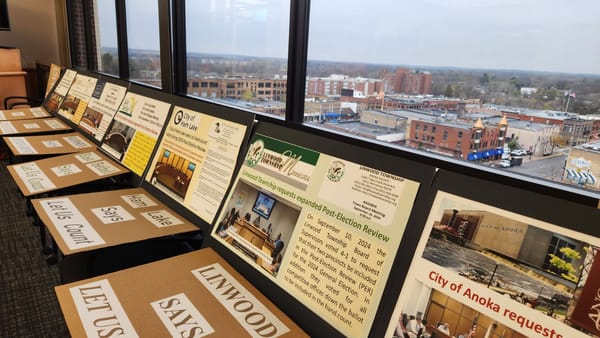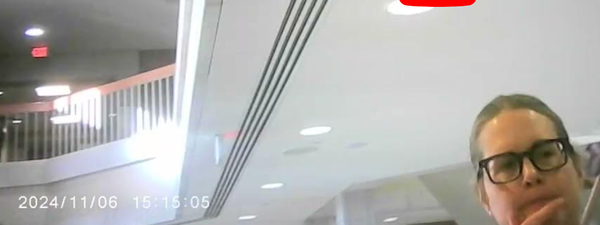A future where every voter’s vote is counted and 100% auditable immediately
Hand counting paper ballots in precinct, in a decentralized manner—no machines
“I consider it completely unimportant who in the party will vote, or how; but what is extraordinarily important is this—who will count the votes, and how.”
Joseph Stalin, 1923
“Since we know what we will find when we do our audits—”
“That we’ve been duped.”
“Yes, so what’s stopping us from reformulating our election processes as you described earlier and then immediately calling for new elections?”
“Nothing.”
From a conversation between Col. Phil Waldren and the author inside The Military Heritage Alliance around 6pm on Day Three of Mike Lindell’s Cyber Symposium in Sioux Falls, South Dakota, August 12, 2021.
Let’s start with where we are headed.
We are on our way to a future where every voter’s vote is counted and 100% auditable immediately. See this video clip from Col. Phil Waldron in a Nye County Commissioner’s meeting in March 2022 where a resolution was passed by the commissioners 5-0 to remove electronic voting equipment from future elections. (They weren’t the only county in Nevada to do so.)
Elections have become too complicated. Complexity breeds corruption. By contrast, simplicity yields success.
Elections should:
- Be a single day, probably a national holiday
- Be machine-less
- Use paper ballots, hand counted, that are 100% auditable
Elections should NOT have:
- Dropboxes
- Mail-in ballots
- Long absentee and early voting periods
- Machine-driven check-in (epollbooks)
- Machine-driven counting and tallying and recording (tabulators)
- Machine-driven adjudicating and reporting (election management systems)
In Minnesota, these already opaque computer systems are increasingly networked and centralized and thereby make it easier for just a few bad actors to control election outcomes.
Those who control the machines, control who wins.
This short book will shine light on exactly how that happens.
But if you’ve already lost confidence in machine-driven elections, you may want to hear some of the objections made against moving to hand-counting paper so that you can be ready to counter them.
Objections to the above have come from expected places, like the media, part of the cover-up, who have been forced to shift their language from a) no evidence of fraud to b) no widespread evidence of fraud to c) not significant enough fraud to alter the election outcome.
Some objections have also come from legislators. “We can’t get voter ID past the Democrats.”
Responses like this are in part discouraging because voter ID is only one simple change that is needed. Further, to make elections truly fair again would require the legislature to amend Minnesota statutes or write new ones, like the banning of electronic voting equipment. But there is good news: once the majority of Minnesotans learn how vulnerable the machines and computer systems currently in use are, legislators on both sides of the aisle will be hearing regularly from the people who will be able to articulate exactly what they want.
Other objections have come from local county government. Having sat in meetings with county commissioners and election officials, the common objections I’ve heard reduce to time, effort, and money.
Time:
Hand counting paper takes longer than feeding ballots through a machine. However, what’s more important than speed is accuracy. 18 months after the November 3rd 2020 general election, we are still “counting”.
Effort:
Manual labor is required to hand-count paper ballots. With enough paid staff or volunteers the overall effort is spread across those doing the work. (I imagine many people in all 87 Minnesota counties would enthusiastically join an effort to produce the first non-machine election result in decades.) Also, if the 46-day absentee election were removed, that would save election officials and ballot boards 46 days of work.
Money:
Rick Weible has compared the net cost per ballot with machines versus paper. Machine counting costs $14 per ballot. With paper counting, costs would be cut in half to $7 per ballot. Hand counting paper not only costs tax payers less in the long run but it also produces reliable and auditable results which could restore confidence in the overall election process and go a long way to minimizing fraud.
Public county commissioners board meetings every two weeks have been increasingly attended in late 2021 and early 2022 because changes can be made within local jurisdictions without changes to election law from the legislature. This is where the people’s voice can truly be heard and county commissioners can even add a discussion of election systems and processes as an agenda item. If change is desired, a resolution can be brought and voted upon. A no-confidence vote on the machines can lead to real change and a return to hand counting paper. Again, this has already happened elsewhere. Let’s make it happen in Minnesota.




